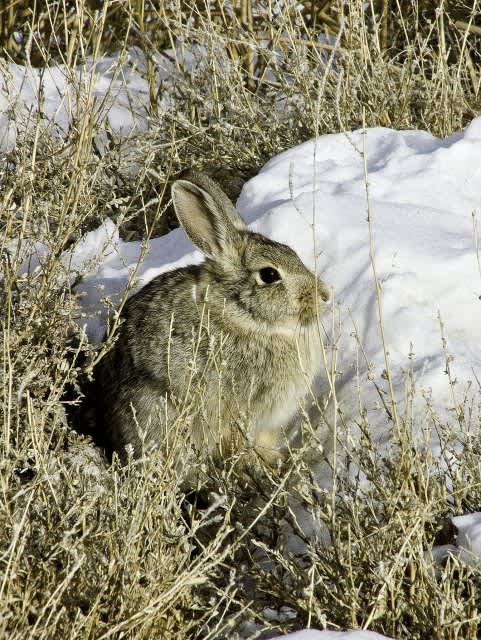Winter is a Great Time to Hunt Cottontails in Utah
Utah Division of Wildlife Resources 01.17.13

Cottontail season runs until Feb. 28
Don’t put your shotgun or .22 away yet.
Four upland game hunts are still underway in Utah. And if you’re just getting into hunting — or you’re an experienced hunter who’s ready for a hunt that’s not too strenuous — cottontail rabbits might be the answer.
Cottontails are found across Utah. The terrain in which they live is fairly easy to hunt. And when you find a pocket of rabbits, you should be in for a good shoot.
“Cottontails are fun to hunt,” says Jason Robinson, upland game coordinator for the Division of Wildlife Resources. “And you don’t need a lot of equipment to hunt them.”
Terrain
Robinson says rabbits typically live in two types of areas in Utah — areas that have brushy, dry washes with lots of tall sagebrush or rabbit brush in them, and areas that have lots of rocks and rocky outcroppings.
“Cottontails hide in burrows,” Robinson says. “Draws that have tall sagebrush or rabbit brush in them also have loose, deep soil that the rabbits can dig in. Rabbits will also burrow under large rocks, or they’ll hide in the crevice of a rock.”
Unlike jackrabbits, which can elude predators by outrunning them, cottontails need the help of broken terrain to stay hidden. That’s why you’ll usually find cottontails in hilly areas rather than on flatlands.
Cottontails feed early in the morning or later in the afternoon. Between those times, you’ll usually find them resting and sunning themselves near or under brush that isn’t far from their burrow. If they’re using a rock to burrow under, they’ll often sun themselves on a flat piece of rock.
Cottontails in Utah
Robinson says areas covered with sagebrush in Box Elder, Tooele, Juab and Millard counties are popular and good areas to hunt. “These areas are fairly close to the Wasatch Front,” he says, “and they can provide good hunting.”
DWR biologists conduct rabbit surveys every summer. During their surveys this past summer, they found good numbers of rabbits in Duchesne and Emery counties.
“Rabbit numbers are on the upswing in both of those counties,” Robinson says.
As you’re deciding which area to hunt, you might want to choose an area you can visit frequently. “Rabbits aren’t everywhere,” Robinson says. “If you choose an area that you can visit often, you’ll learn which parts of the area hold rabbits.”
Best times to hunt
Robinson says early morning and late afternoon are the best times to hunt cottontails. “That’s usually when the rabbits feed,” he says. “In order to feed, rabbits move away from their burrows and into areas where it’s easier for you to see and pursue them.”
Tactics
One of the best ways to hunt cottontails is to space the hunters you’re with several yards apart and then walk in a straight line through the area you’re hunting.
Cottontail rabbits have excellent hearing, so make sure you move slowly and quietly. As you walk, pay close attention to areas where rabbits might be feeding or resting, such as near sagebrush plants and rocky outcroppings.
Robinson encourages you to wear hunter orange. “Orange won’t scare the rabbits away,” he says, “and wearing hunter orange makes it easier for other hunters to see you.”
Rifles or shotguns
Small-caliber rifles, such as the popular .22 and the newer .17, are excellent firearms to hunt rabbits with.
Shotguns with No. 6 lead shot are also a good choice.
“Rifles are best if you plan on stalking rabbits and then shooting them before they move,” Robinson says. “If most of the rabbits you see will be flushing and running away from you, shotguns are a better choice.”
Other equipment
In addition to a small-caliber rifle or a shotgun, you’ll need the following to hunt rabbits in the winter:
- Warm clothes. Wear your clothes in layers so you can remove clothes as the day gets warmer.
- Waterproof boots.
- A backpack that includes extra shells or bullets, drinking water and high-energy snacks.

